Curating antique & modern art in contemporary spaces
Incorporating modern, abstract, or antique art into a contemporary space has the design potential to transform individual decor narratives and create an irresistible focal point and conversation piece. Artworks possess unique stories and distinctive styles which immediately infuse a room with personality and depth. The juxtaposition of pairing contemporary elements with timeless pieces invites a harmonious blend of the old and the new, sparking curiosity and admiration.
Whether it’s the bold strokes of an abstract painting or the intricate details of an antique sculpture, each piece is poised to become a testament to the beauty of diversity and the richness of artistic expression, making your space not just a place to live, but a canvas of inspiration and creativity.
The ‘art’ of creating a living space that feels both contemporary and timeless can be a challenge. One of the most effective ways to achieve this is by blending antique art in contemporary spaces as well as flipping the script and incorporating modern art pieces with traditional furniture. This disparity of old and new creates dynamic visual interest.
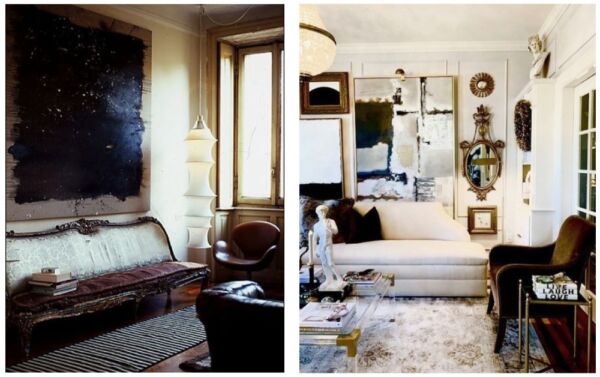
Here are some of our Crown Collection designer tips to help you seamlessly integrate these contrasting elements into a harmonious and stylish living space.
Establish a focal point
When mixing antique and modern art, start by establishing a focal point in your room. This could be a stunning antique piece of furniture, such as a Victorian armchair, or a large, contemporary abstract painting. By creating a clear focal point, you give the room a sense of direction and coherence. Surround this focal point with complementary pieces that enhance its appeal without overwhelming it.
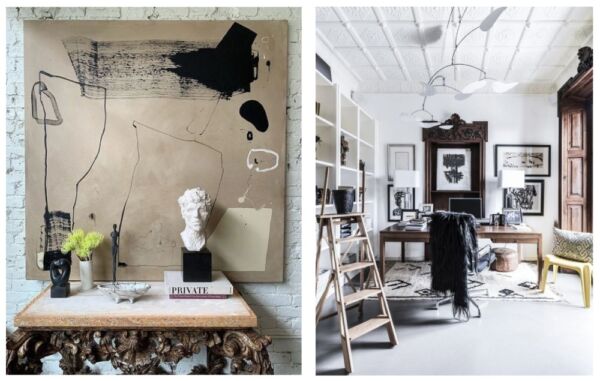
Design tip: If your focal point is an antique piece of furniture, consider placing a modern art piece above it. Conversely, if your focal point is a modern piece or abstract artwork, add antique art or frame it with an antique console table or accessories.
Play with contrast
The distinct antithesis and thoughtful pairing of old and new is key when mixing styles. Contrasting the sharp lines and minimalism of modern art or furniture pieces can beautifully offset the ornate details and rich textures of antique artworks, flooring or accessories. Don’t be afraid to mix different eras and styles; this contrast can highlight the unique qualities of each piece.
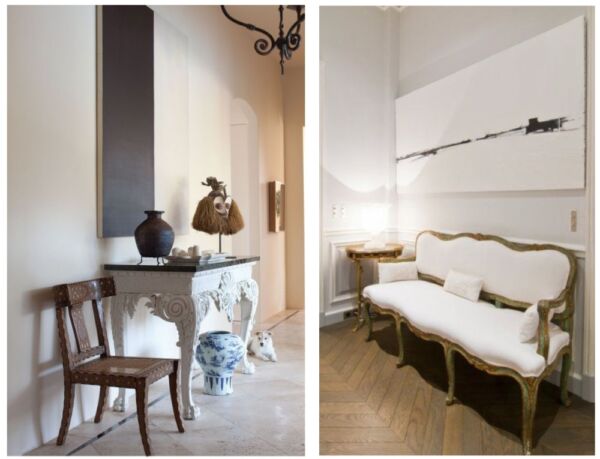
Design tip: Pair a sleek, modern sofa with a vintage Persian rug or a contemporary sculpture with a classic mahogany table. The contrast will draw the eye and add depth to your space.
Balance through colour
Colour can be a unifying factor that ties eclectic styles together. A cohesive colour palette is the design alchemy that brings harmony when fusing antique and modern elements. An antique gold-framed art piece or decorative gilded mirror synced with gold accents in your modern art or décor brings a sense of continuity.
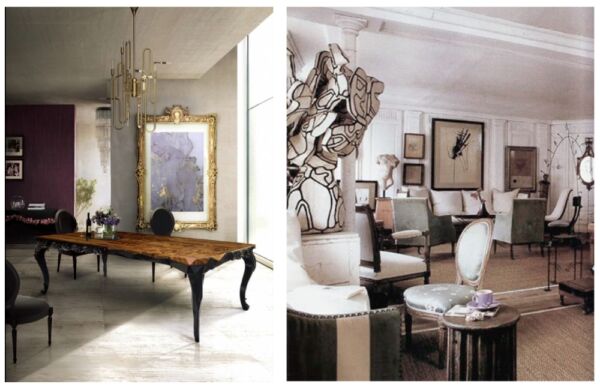
Design tip: Choose a dominant colour from your antique pieces and find modern artworks that incorporate this hue. This creates a visual thread that links the old and new.
Layer the textures
Layering different textures adds a rich, tactile dimension to your space. The effect of cleverly combining the smooth, glossy surfaces of modern art with the intricate, aged textures of antique pieces will instantly make a space feel more inviting, intentional and complex.

Design tip: Mix materials like glass, metal, and acrylic from modern artworks with wood, velvet, and leather from antique furniture. This tangible variety makes your space visually and physically engaging.
Subscribe to scale, proportion & placement
When contemplating the investment of a large modern artwork or small-scale antique art collection, maintaining a sense of balance is crucial. Ensure that the scale and proportion of your pieces work together and carefully consider the placement of each piece. Antique and modern elements should complement rather than compete with each other.
An oversized antique artwork might overwhelm a small room, while a tiny modern sculpture could get lost in a large space. Aim for a balanced composition where each piece feels appropriately scaled and in harmony with the layout and other pieces in the room. A thoughtful placement should create a vignette that tells a story that fits the overall aesthetic of your space and highlights each item’s attributes.
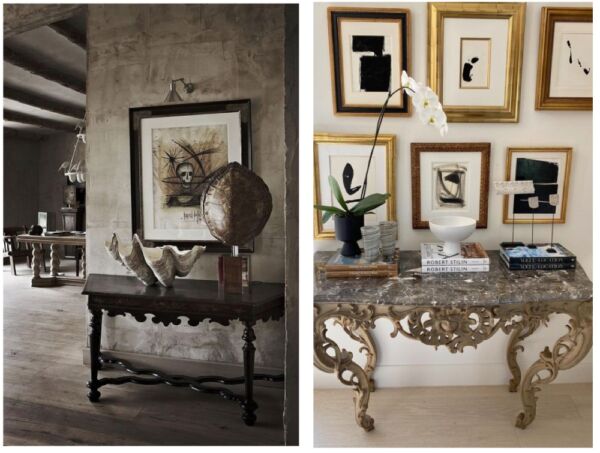
Design tip: Use larger modern art pieces to anchor the room and smaller antique accessories to add character. Alternatively, an imposing antique piece can be balanced with minimalist modern décor.
Indulge a personal touch
Art is always a personal and emotive thing. As long as you are true to your own design narrative that reflects your individuality, modern or antique art will naturally become a conversation piece in your home. Your home should reflect your personality and taste. Combining antique and modern artworks that reflect your taste and allow you to tell your unique visual story through the décor elements you choose will always resonate with the space.
Design tip: Don’t be afraid to mix sentimental pieces with new finds. The personal connection you have with each item will bring interest and authenticity to your space.
Mixing antique and modern art in contemporary living spaces is an art form in itself. It requires a keen eye for balance, a sense of adventure, and a personal touch. Creating a space that is not only stylish and cohesive but also rich in history and modern flair means allowing the old and the new to coexist in a space.

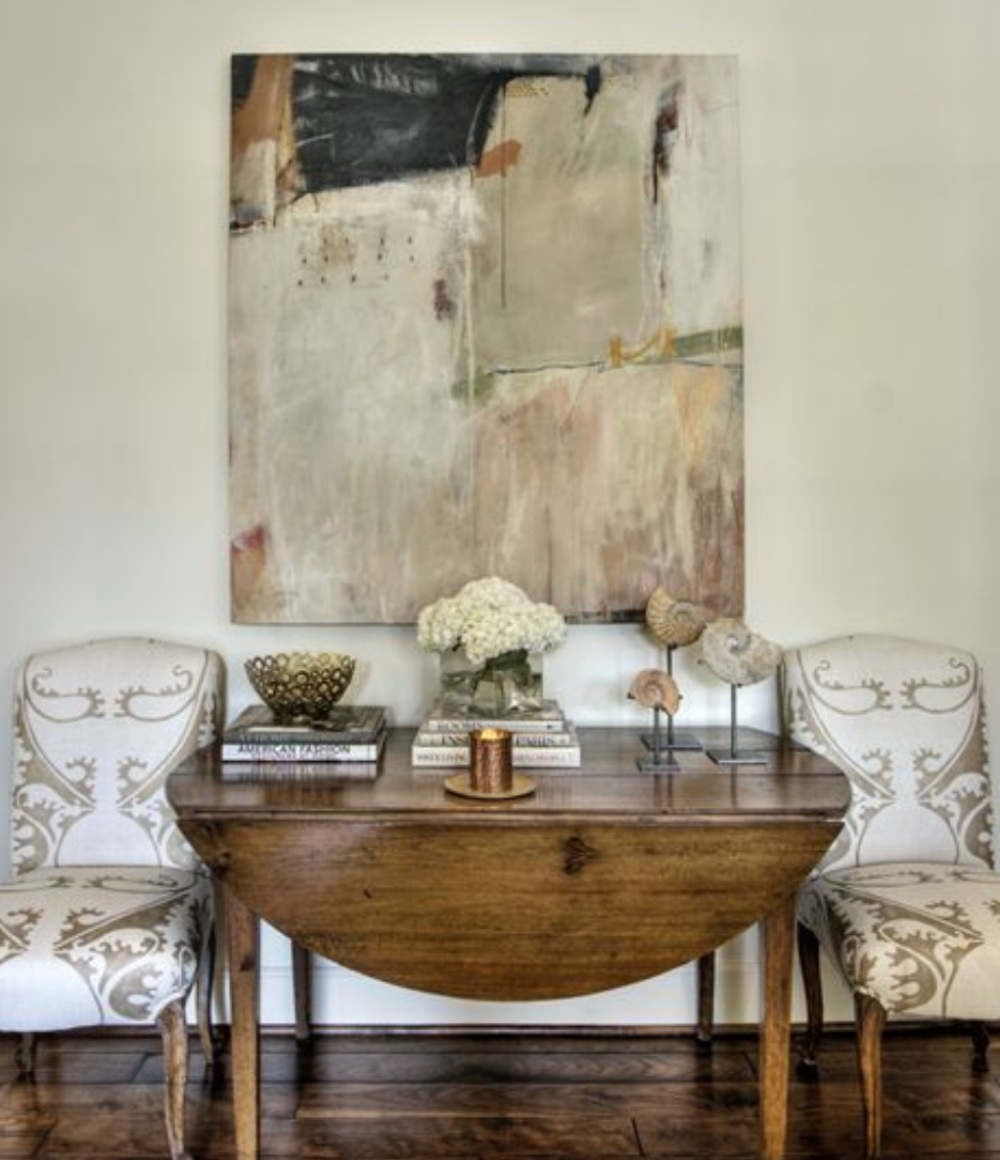
 Whatsapp us now
Whatsapp us now